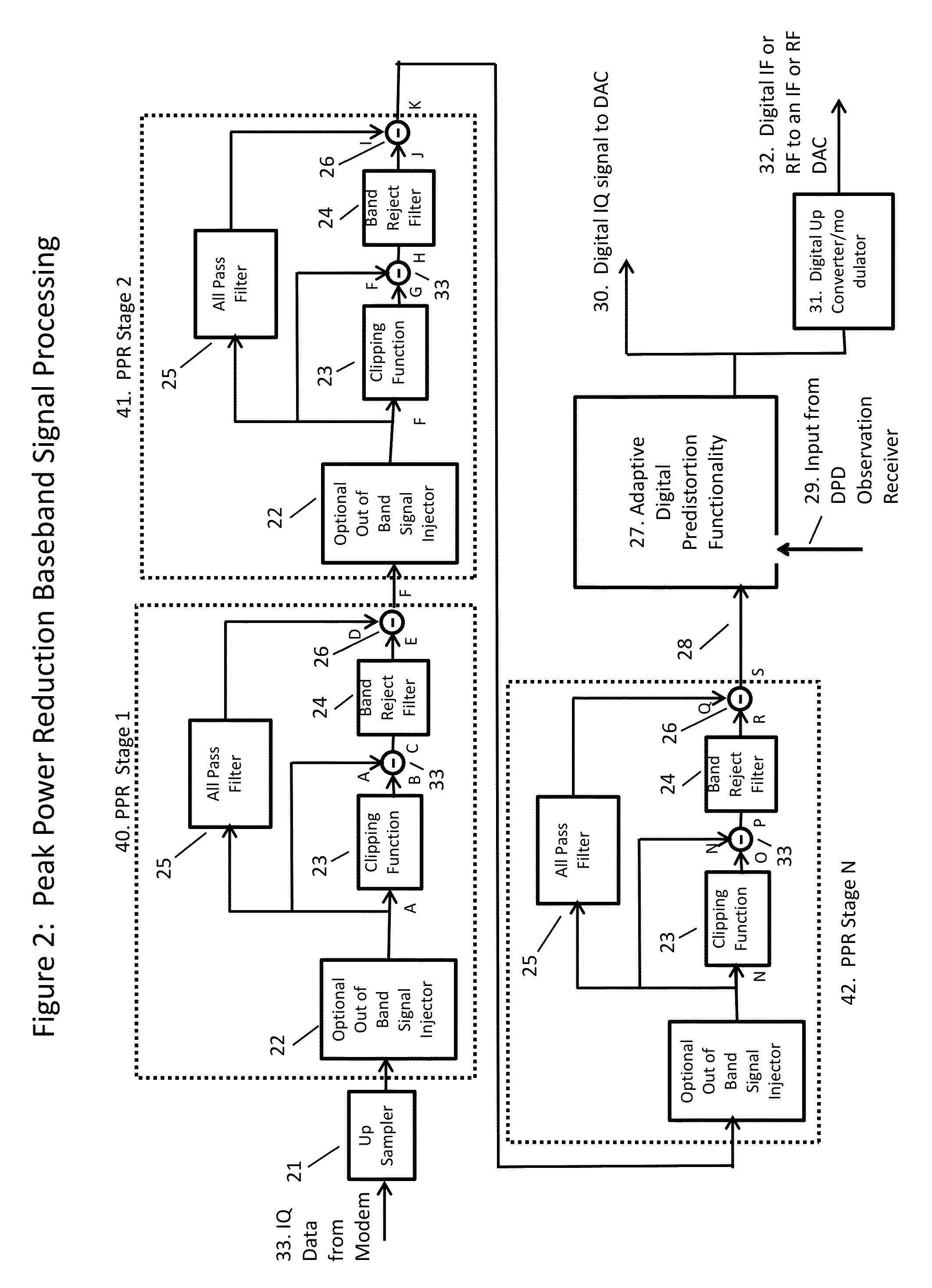Apparatus, system and method for performing peak power reduction of a communication signal
a communication signal and peak power reduction technology, applied in the field of signal processing, can solve the problems of linear amplification challenges, increase the error vector-magnitude of the signal itself, increase the interference of adjacent channels, etc., and achieve the effect of reducing peak power, reducing power amplifier efficiencies, and small siz
- Summary
- Abstract
- Description
- Claims
- Application Information
AI Technical Summary
Benefits of technology
Problems solved by technology
Method used
Image
Examples
Embodiment Construction
[0050]Systems, Methods and Apparatus according to preferred embodiments of the present invention provide for reducing the peak to average power ratio of a modulated communication signal such as those typically used in communication systems and more specifically wireless communication. Specifically, the present invention achieves a reduction in the peak to average power ratio by adding an out of band peak power reducing (OBPPR) signal.
[0051]FIG. 1 shows a block diagram of a transmit chain for a base station. The information bearing signal usually originates in the modem of the terminal or base station and is transferred to the Baseband Signal Processing 1 of the transceiver. Typical functions of the Baseband Signal Processing Unit 1 include up-sampling the IQ data, filtering the IQ data to remove out of channel energy, up-converting the digital IQ data to a complex IF or real IF or potentially even digital RF. Peak Power Reduction and Base Band Predistortion algorithms are also funct...
PUM
 Login to View More
Login to View More Abstract
Description
Claims
Application Information
 Login to View More
Login to View More - R&D
- Intellectual Property
- Life Sciences
- Materials
- Tech Scout
- Unparalleled Data Quality
- Higher Quality Content
- 60% Fewer Hallucinations
Browse by: Latest US Patents, China's latest patents, Technical Efficacy Thesaurus, Application Domain, Technology Topic, Popular Technical Reports.
© 2025 PatSnap. All rights reserved.Legal|Privacy policy|Modern Slavery Act Transparency Statement|Sitemap|About US| Contact US: help@patsnap.com



